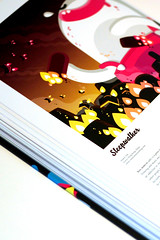 What are the Elements of Design?
What are the Elements of Design?
The Elements of Design are Colour, Line, Shape, Size, Space, Texture and Value.
Colour
Without going into scientific explanations here, colour in design is vital for:
- Setting a mood
- Adding meaning to the subject
- Emphasising elements or drawing focus to a certain spot in the layout
- Guiding the eye and thus determining the flow of the layout
Line
Lines are used in design to assist with creating:
- Texture
- Space definition
- Emphasis
- A mood
- Motion or movement
- An illusion of perspective
Shape
The basic shapes that almost everything is made up of are circles, rectangles and triangles. However, these basic shapes have a multitude of variations and can come from three broad categories:
- Geometric shapes
- Natural shapes
- Abstract shapes
In design, we use shapes for:
- Texture
- Space definition
- Separation from other elements
- Setting a mood
When used in ‘negative space’, a shape can also be ‘implied’.
Size
Size defines scale and proportion. It is the relative largeness or smallness of an object in the context of the composition of all the elements in the design.
In design, size helps to:
- create depth
- create perspective
- create hierarchy and organise the elements in the design
Space
Apart from depicting depth and the placement of objects in relation to other objects; space creates the illusion of dimension.
- In design, space is used to:
- Set a mood
- Emphasise elements by separation
- Create depth
- Create balance or imbalance
- Create a resting place for the eye
Value
Value is the relative lightness or darkness of an object, in other words, the difference between shadow and highlight. Although not the same as colour, value is often used to “colour” an image, especially when working in greyscale (black and white).
In design terms, value is used to create:
- Mood
- Interest
- Emphasis
- Depth
- Movement
Texture
Texture refers to the surface quality of a form or shape and is a good way to add details to a design.
In design, texture is used to:
- Define shapes or space
- Add visual interest
- Create a mood
- Emphasize an object
- Create a tactile response
- Add realism
